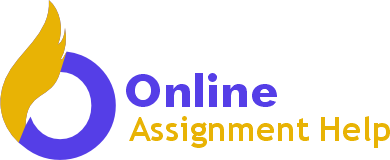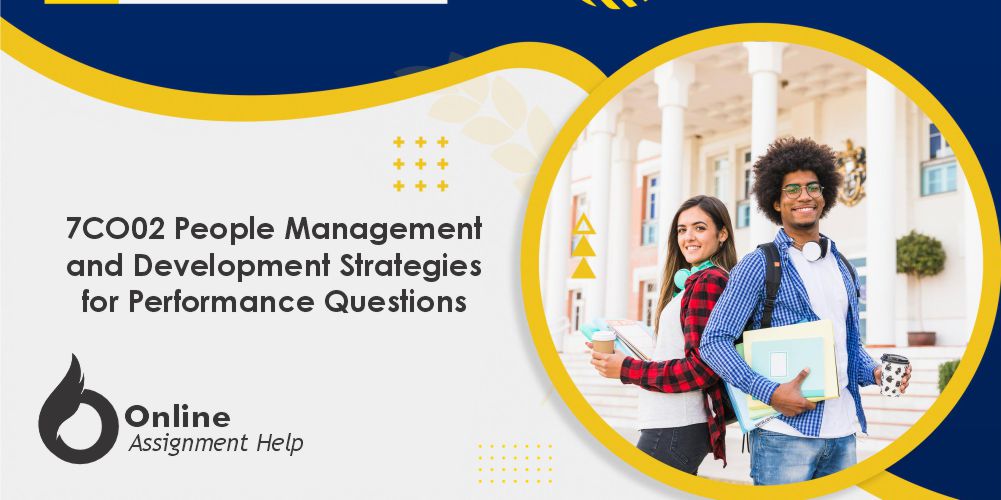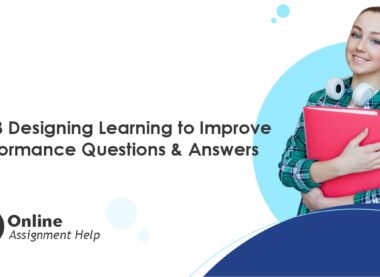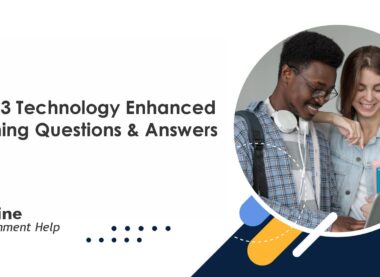Table of Contents
7CO02 People Management and Development Strategies for Performance Questions
Question 1 ( AC 1.1 )
‘Fostering employee wellbeing is good for people and the organisation’. CIPD (2022) Drawing upon published research, produce a business case that explains how promoting wellbeing strategies can benefit all stakeholders within an organisation.
Question 2 ( AC 1.2 )
To what extent do you agree with the view that it is the responsibility of the Head of the People Function to ensure that employment policies and practices always support the achievement of an organisation’s current strategic objectives? Explain how this is achieved in your organisation, or one that is familiar to you. Justify your answer.
Question 3 ( AC 1.3 )
Why is it challenging to bring about significant, long-term improvements in an organisation’s culture? Illustrating your answer with examples, evaluate what role the HR/HRD function can play in helping to meet these challenges.
Question 4 ( AC 1.4 )
You are asked to make a 30 minute presentation at a local CIPD branch meeting. The subject is ‘a
critical evaluation of systemic thinking and how it can help solve people management problems’.
What THREE key points you would make in your talk and why?
Question 5 ( AC 2.1 )
Examine the merits of ‘high road’ and ‘low road’ approaches to the management of performance and productivity in employing organisations. How far do you agree with the view that ‘high road’ approaches are always preferable both for employees and employers? Justify your answer with reference to examples from your reading.
Question 6 (AC 2.2 )
There has been extensive research evidence that links people management practices with
improved business performance. Selecting one piece of research, critically evaluate its main
findings and identify three factors that need to be in place to create an environment that will
maximise the effectiveness and impact of people management within organisations. Fully justify
these with reference to your wider reading.
Question 7 (AC2.3)
Discuss the ‘resource-based approach’ to developing people strategies within organisations, critically evaluating its suitability/or not for developing these strategies within your own organisation, or one that is familiar to you. Fully justify your conclusions.
Question 8 (AC2.4)
Explain the view that high performance work practices benefit both employers and employees
when they are introduced or enhanced. Illustrate your answer with examples.
Question 9 (AC3.1)
People Management (21 April 2023 ) reported that “Almost half of HR professionals claim they are dealing with more employee relations issues than before Covid”. Discuss how people professionals can adopt an effective approach to managing employee relations issues. Justify your
answer by drawing upon academic theory and research evidence.
Question 10 ( AC 3.2 )
The CIPD (2022) described the ‘Great Resignation’ as a pandemic-induced re-evaluation of what
people “want from work with a suggestion that people will no longer put up with bad work”.
i) Draw upon your wider reading to evaluate the evidence for the ‘Great Resignation’ and
ii) Identify TWO specific actions organisations can take in order to combat any trends towards a great resignation
Question 11 ( AC3.3 )
Evaluate the increased appetite amongst employees for more learning and development opportunities at work and evaluate how organisations can respond to the this. Illustrate your answer with example
Question 12 ( AC 3.4 )
Employment relations within the UK are turbulent with high levels of disputes and strike action. Evaluate the opportunities for and barriers to HR sustaining effective employment relationships during these turbulent times.
Question 13 ( AC 4.1 )
Examine the ways in which the impact of people practices can be evaluated within your organisation, or one that is familiar to you. What are the main barriers to evaluation? Illustrate your answer with examples.
Question 14 ( AC 4.2 )
The CIPD’s purpose is to champion better work and working lives. Critically assess how the CIPD’s purpose can be implemented in your organisation, or one that is familiar to you. Justify your answer.
Question 15 ( AC 4.3 )
Analyse the opportunities for drawing upon insights from customers and stakeholders in order to inform people practices within your organisation, or one that is familiar to you. Illustrate your
answer with examples.
Question 16 ( AC 4.4 )
Drawing upon your wider reading, assess the business case for creating a coaching culture within your own organisation, or one that is familiar to you.
Question 17 ( AC 4.5 )
“The challenge facing the profession is best characterised by the common expression, ‘I’m a people person, not a numbers person’, which exists in pockets throughout the profession”. Critically evaluate how you can address this challenge within your organisation, or one that is familiar to you, in order to use insights from people data to inform business decisions.
7CO02 Assignment Answers
Question 1 (AC 1.1)
Introduction
Employee wellbeing makes reference to the mental status, physical health, emotional stability, and the economic comfort that an employee can enjoy at the workplace on the background of the decisions made by people managers in that workplace. The people practice professionals guide the employer in identifying wellbeing strategies and planning on the resources necessary to actualise the wellbeing strategies. Intentionally fostering or encouraging employee wellbeing remains crucially important for everyone including employees and the entire organisation (CIPD, 2020). Organisations may commit to assure employee wellbeing on the basis of championing positive workplace experiences for the collective benefit of everyone including communities. It eliminates stress and stressful working environments allow everyone to thrive. Employee wellbeing proceeds to catalyse positive employee engagement and improve overall organisational performance. An organisation that proceeds to intentionally invest in employee wellbeing can remain assured of increased or better resilient levels, reduced or diminished incidences of employee absence, and increased performance levels or productivity levels.
Wellbeing strategy 1: Tailoring policies to meet employee needs
Organisations have to understand that it is impossible to activate a one shoe fits all kind of a strategy that is expected to immediately meet all employee needs. Every organisation has to have the policies that allow it to address unique employee needs (Li, 2022). For example, an organisation that wholly relies on remote workers around the world cannot insist on a uniform work reporting time. Such an approach would stress employees working in different time zones. An extension of the example is having an employee logging in from Sheffield in the United Kingdom while the other gets into the system from Pretoria in South Africa. It is in the firm’s interest to understand that it is unfair to have the two workers report to work at the same time. On the issue of policies, a company like Ryanair may not insist that its pilots work eight hours a day like many organisations can tailor their working hours’ policies. It is only fair for the aviation facility to understand how pilots work and tailor their working hours accordingly. An organisation that customises its policies to understand its employees’ needs display the foundational empathy required to assure employee wellbeing at the workplace (Li, 2022). CIPD reported that at least 35 million working days were lost in various wellbeing issues such as stress, depression and anxiety in the 2022/2023 UK working cycle (CIPD, 2023).
On the strategy of tailoring its policies to meet employee needs, organisations proceed to cover the needs of its various stakeholders. On the examples given on working hours’ policies, the organisation achieves highly motivated workers. This benefit optimises productivity. The employer, as an organisation, achieves their targets. The result is having a satisfied workplace, a productive environment, and an organisation that realises its overall objectives (Martins, 2023). If the organisation has external stakeholders such as shareholders, such an organisation will also meet their needs based on good performance. The importance of committing to this strategy is having every stakeholder satisfied and happy. The foundation is catering to the employee needs to assure automatic rise in productivity and having the benefits trickle down to each and every other stakeholder.
Wellbeing strategy 2 : Building or constructing a robust institutional / organisational approach or framework to promote mental health / wellbeing
The Chartered Institute of Personnel Development (CIPD) avers that every organisation intentionally committed to employee wellbeing has to consider the health status and the employee wellbeing of the entire person or the whole person. For context, focusing on good compensation while having inconsiderate seniors and managers will not produce a mentally healthy employee (Newson et al., 2023). It is necessary that the organisation does not purport to introduce good policies on one end but water them down with insensitive actions. Equally, CIPD discourages organisations from taking reactive measures rather than focusing their efforts on proactive approaches (CIPD, 2020). For example, an organisation should not create a sexual harassment policy after public outcry on sexual harassment issues at their workplace. The Google example that had the company fire its senior executive after public outcry can give hints on reactive measures. It is fundamentally important to have the organisation define its approach to mental wellbeing and stick to the developed policy.
A robust organisational approach that even considers setting up counselling departments to guide mentally disturbed employees proceeds to prevent unnecessary absenteeism and ‘leaveism’. A 2020 CIPD survey on mental wellbeing suggests that companies or organisations creating robust mental health frameworks report greater productivity compared to their peers and have lesser cases of employee absenteeism (CIPD, 2020). It is against this background that this strategy remains important in producing sustainably productive employers. It is clear that many more organisations would reap greater benefits if they strategically approached mental wellness and have their leaders and manners intentionally support their employees at the workplace.
In terms of benefits, assuring mental wellness and health positively impacts all stakeholders. One, positive mental health allows the employee a chance of being permanently present at the workstation in all required times. Absence rates are correlated to negative mental health. If the absence rates decrease, the organisation realises a positive jump in overall productivity. Mental health also determines employee engagement at the workplace (Hassard et al., 2021). Stressed employees cannot positively engage each other making it possible to have a severely demoralised working environment.
Conclusion
Employee wellbeing forms the basis of assuring organisational health, individual productivity, overall institutional productivity, and sustainable achievement of organisational goals. All employers have to understand their relationship with employees and accept that employees are the primary cog that drives performance. To that end, the policies created must remain visibly sensitive to employee needs. For example, a facility suing remote working approaches have to understand that employees need flexibility especially based on working schedules and hours. The policies can support the second strategy of intentionally creating a robust organisational framework customised to assure a mentally healthy working environment. It is even possible to have an entire psychology department designed to assess primary workplace stressors. Such an approach can help deal with mental health effects as absenteeism and unexplained leaves. The consequent productivity levels motivate employees and easily help the organisation in meeting its objectives.
Question 8 ( AC 2.4 )
Introduction
High performance work practices also identified as HPWPs come up as the actions designed to better an organisation’s ability (or capacity) to competently attract, proceed to select, eventually hire, continue developing and retain high-performance or performing employees. It is important that every facility considers the practices it can absorb to assure high performance. No single conscious organisation can activate its operations with the goal of assuring low performance. To that end, having specific HPWPs can allow the facility to focus on them as well as considering ways of improving on the practices or completely adopting new ones (OECD, 2021). These practices benefit the organisation by motivating high productivity, creating engaged employees, promoting satisfaction at both the individual/organisational levels, and promoting staff retention. It is on the basis of benefits that organisations have to invest in accessing the appropriate HPWPs. Bundles of these practices factor in the collection of a number of practices than can fall within a single category such as engagement.
High performance work practices (HPWPs)
Understanding the specific high performance work practices implies going through the possible bundles of HPWPs that can also be referred to as sub-systems. In engagement or engaging staff, an organisation can have a number of HPWPs. One, the first step towards high-performance is conveying an accurate and clear vision and mission statement. It is the first step towards getting the right staff or the appropriate personnel within an organisation. If Ryanair has to operate with employees, as an example, who will deliver high performance, they have to make sure that such is communicated through the vision and mission statement (OECD, 2021). In the absence of a clarified vision and mission statement, the employees at Ryanair will not understand their role in helping the organisation achieve its goals and objectives. Another bundle of best practice is empowering the frontline through such practices as assuring employee satisfaction. For an organisation such as Ryanair, ignoring employee satisfaction will not have them delivering high performance. It is through empowerment, as frontline workplace soldiers, that a facility can motivate the employees to aggressively help the organisation in raising its performance. Empowering the frontline as a bundle of best practice also demands that the employer assures the employee of employee security through retention. High performance through retention has a dual reality or approach. One, job security implies that the organisation has the confidence in the employee. The employee then proceeds to register high-performance as a measure of accessing that job security. Another angle arises by way of high-performance raising the retention levels. No single organisation will unduly release a high-performing employee. It is against this background that HPWPs exist as mutually beneficial practices. Aligning the organisational leadership towards running an evolving institution and responding to changing employee needs is a mechanism of assuring sustainable operations in organisations. At Ryanair, for example, leaders may need to understand that flexible working hours are a necessary consideration in creating high performance environments. A performance-based compensation schedule may also assure high-performance.
High performance work practices (HPWP) carry immense benefits to both employers and employees. These benefits can be classified to long-term benefits and short-term benefits. From a long-term dimension, employers enjoy increased productivity over time and access sustainably progressive performance. These two benefits take place on the background of successful employee engagement. When the organisations manage to allocate sufficient resources to the support of employees, they activate motivation (M and B, 2019). These actions when, repeated over time, come up to assure a high-performance environment. An example is the use of support at the Royal Military Academy in the UK. That institution intentionally invests in supporting its employees and providing them with resources. Progressively, the facility has managed to ensure sustainable success over the years. Long-term benefits to employees occur by way of having a rewarding career. For example, it becomes possible for an employee at Ryanair to rise to the position of a senior manager from a support staff level at the facility. The second long-term benefit is accessing long-term mental wellbeing (Caligiuri et al., 2022). An employee working in a firm practicing HPWPs will display a high element of satisfaction and motivation.
HPWPs still award short-term benefits to both employers and employees. One, the employer can enjoy an instant surge in productivity by way of moving from loss-making realities to profit-making performance. If British American Tobacco (BAT) engaged a robust framework geared at absorbing HPWPs, such a firm can move from loss making into profit making. The second short-term benefit from this end is that employer’s end up having employees who can be trusted with critically important institutional information. Royal Military Academy can get rest assured that none of its officers will leak crucial information on the background of applying HPWPs (Anwar and Abdullah, 2021). To the employees, they can enjoy instant improvement in compensation, and better training at work. If Diageo has had low performance on the basis of compensation, the presence of better compensation can immediately stir the employees into improved performance. Short-benefits can motivate both employers and employees in the process of adopting more HPWPs.
Conclusion
High performance work practices retain absolute focus on the performance and productivity of the organisation. To realise this goal, the employers have to facilitate an environment that allows employees to perform leading to the benefits being felt by both employees and employers. For example, keeping employees engaged through sufficient support will keep them satisfied. At the very end, the organisation access optimal performance and improves its overall results. All organisations keen on realising sustainable growth have to determine ways of entrenching HPWPs. In the absence of an intentional approach to these practices, the institutions can forget high performance from employees. The United Kingdom has successful organisations that grew and continue to grow on the background of adopting bundles of practice incorporating the HPWPs. It is the cardinal assignment of entities seeking to grow to fertilise a working environment that recognises the value of HPWPs.
Question 11 ( AC 3.3 )
Introduction
This increased appetite has been brought about by employees’ desire to perform better in the organisation while ensuring they ensure the achievement of organisational goals and objectives (Kim, 2022). This has been occasioned by the constantly changing market trends, the need for personal and professional growth, enhanced engagement, changing employee skills and talent demands, and also enhancing job security. As a result, employees are actively seeking different learning and development opportunities to ensure they can achieve their personal and professional objectives in the workplace (Mikołajczyk, 2021). The major benefits of the increased appetite for more learning and development opportunities include enhanced employee skills and talent leading to performance, increased employee engagement due to their new knowledge, and employee motivation towards their work since they feel it easier to perform their obligations. On the other hand, some demerits of increased appetite for L&D include time and resource constraints for the organisation to facilitate learning and development, employee stress and pressure as they balance between L&D and their organisational goals and objectives, and frustration among employees when they seek in L&D and fail to meet the desired skills demand in the organisation.
Learning Technologies: Offering Different Learning Channels for Employees
In response to the increasing appetite amongst employees for learning and development opportunities at work, organisations can respond by offering different learning channels and strategies for employees in the workplace (Giannakos et al., 2021). This is meant to ensure that every employee can identify the most suitable strategy to satisfy their need for enhancing their need for learning and development and thus ensure they can pursue it as they continue to offer their skills and talents to the organisation. Additionally, organisations can offer different learning channels for their employees to ensure it can give them an opportunity for learning and development depending on the specific skills and talents demands they desire to improve (Kraiger and Ford, 2021). Some of the different channels of learning and development in an organisation include webinars, seminars, online courses, workshops and self-paced learning, and the traditional classroom setting. These channels improve the employee skills and talents and thus can potentially satisfy the increasing appetite for learning and development (Madhavan and Venugopalan, 2023). One major strength associated with this response of offering different learning channels for employees is focusing on different learning styles for its workforce. Through offering employees different learning channels, each employee chooses the most practical and preferred learning channel thus enhancing learning and development (Vo et al., 2022). Another benefit of this response is through enhancing flexibility and accessibility to learning and development opportunities. Employees are exposed to more flexible and accessible learning and development opportunities which allows self-paced learning satisfying the appetite for learning and development (Gurchiek, 2023). However, this response by organisations is time and resource intensive. Additionally, this response has the potential to overwhelm employees. When employees are offered different learning channels, they are highly likely to be overwhelmed as they seek to strike a balance between the different learning strategies thus affecting learning and development (Tulsiani, 2024). For instance, an organisation may offer different learning channels such as webinars, workshops, and seminars as a response to the increased appetite for learning and development opportunities in the workforce.
Management Development: Promote a Culture of Continuous Learning in the Workplace
Promoting a culture of continuous learning in the workplace is another response that organisations can take to address the appetite for learning and development opportunities. Creating a culture of continuous learning in the workplace is a strategy that encourages all employees to seek strategies to continuously improve their skills and talents gradually and continuously over time (Vo et al., 2022). This implies that an organisation’s employees stay up-to-date with the current skills and abilities of the workforce thus enhancing overall organisational performance. This response by organisations is often achieved through enhanced leadership and commitment, clear communication to the workforce on the importance of learning and development, providing enough resources for learning and development and recognising and rewarding individuals engaged in learning (Vo et al., 2022). This is a response that aims at ensuring employees have the appetite to find learning and development opportunities through continuous learning. One notable strength of this response by organisations is enhanced adaptability among employees in the workplace. When organisations enhance the culture of continuous learning and development, they are more likely to be better equipped with the skills that match the current industry trends and skill demands thus ensuring that they remain agile and suitable to meet organisational demands. (Tulsiani, 2024). This benefits both the employees and the organisation which translates to enhanced individual and organisational performance. Additionally, another benefit of this response is through increased employee engagement and motivation. By creating a learning culture of continuous learning in the workplace, employees are more likely to be engaged and motivated towards achieving their goals and objectives since their need for learning and development has been satisfied which ultimately leads to enhanced organisational performance (Tulsiani, 2024). However, one of the major weaknesses is the time and resource constraints required to implement continuous learning in the workplace. Establishing frameworks for continuous learning in the organisation requires time and enough resources which may not be available to satisfy the employee’s needs for learning and development. Also, another major weakness that may face organisations is resistance to change by some employees. In some cases, some employees may be resistant to the response of enhancing continuous learning because they feel their current skills and talents are enough thus this response may be insufficient (Madhavan and Venugopalan, 2023). For example, an organisation can implement a continuous learning culture to ensure that it focuses on enhancing employee skills and talents gradually to ensure they can satisfy their L&D appetite and achieve individual and organisational performance.
Conclusion
Overall, the increasing appetite for learning and development opportunities has led to employees actively pursuing any available opportunity to improve their skills and talents. This has occurred with significant benefits such as skills and talent improvement, increased employee engagement, and improved employee motivation. It has however been limited by time and resource constraints, employee stress, and frustration as they seek to improve their skills and talents. Consequently, organisations can respond through several strategies to satisfy the appetite for L&D opportunities in the workplace. One strategy is offering employees different channels of learning and development that suit the employees differently. Another response that organisations can pursue is through creating an organisational culture of continuous learning to ensure they can continually improve their skills and talents over time thus satisfying their learning and development needs.
Question 14 ( AC 4.2 )
Introduction
CIPD’s purpose is to champion better work and working lives among an organisation’s workforce and is underpinned by several policies. One of the key policies underpinning CIPD’s purpose is professionalism which requires the maintenance of professional standards in the workplace through illustrating ethical behaviour, integrity, continuous professional development (CPD), and professionalism thus enhancing best practice and competence (CIPD, 2024). Another key policy is work matters where members should enhance good work such as fairness, and valuing others to enhance economic and social responsibility. This ensures that the work issues such as safety procedures are maintained to enhance overall organisational performance. Another critical policy underpinning CIPD’s purpose of championing better work and working lives is people matters which focuses on enhancing the welfare of the workforce through issues such as diversity and inclusion, employee wellbeing and engagement, and employee voice (CIPD, 2024). These policies ensure that CIPD’s purpose is achieved and guaranteed for all members.
Championing Better Work and Working Lives through Professionalism in my Organisation.
Professionalism is one policy area that can be implemented in my organisation to ensure that it achieves CIPD’s purpose of championing better work and working lives. One way that my organisation can implement the policy of professionalism to champion better work and working lives is through interacting and networking with the people professional community. Interacting with the people professional community can enhance better work and working lives through knowledge sharing where professionals can exchange ideas, best people practices, and any lessons learned during people practice (Syrigou and Williams, 2023). Interacting with the people professional community ensures that organisations can increase the levels of professionalism in the workplace thus enhancing the quality of work and working lives. Additionally, my organisation can implement CIPD’s purpose through networking and interaction with the people and professional community through access to resources and expertise. Through these interactions, access to resources and expertise is guaranteed through reports, findings, training programs, and consultation which often leads to achieving better work and working lives for organisations (Chen et al., 2021). Additionally, through implementing interactions and networking with the people professional community professional development is enhanced thus achieving CIPD’s purpose. As a result, my organisation can implement CIPD’s purpose through networking and interaction to achieve professional development. Professional development may be achieved through interactions in situations such as conferences, seminars, workshops, and online interactions to achieve better work and working lives in organisations (Chen et al., 2021). The main benefits of interacting and networking with the people professional community include career progression as a result of information and knowledge sharing, better relationships due to the interactions and networking strategies, and access to better working opportunities that result from enhanced interactions. However, interactions and networking with the professional communities may limit the achievement of CIPD’s purpose due to the time and resource constraints required for the interactions, networking stress and fatigue where individuals may feel strained to engage in interactions and the increased pressure to perform when some individuals feel inadequate during interactions thus limiting better work and working lives (Minghua, 2022). Despite these challenges, networking and interacting with the people professional community is justified to ensure that these people professionals can compare their operational strategies and thus ensure that better work and working lives are achieved. As a result, my organisation can implement CIPD’s purpose of better work and working lives through interacting and networking with the people professional community to enhance organisational performance.
Additionally, my organisation can also implement CIPD’s purpose of better work and working lives through understanding the principles of professionalism. A concrete and coherent understanding of the principles of professionalism in my organisation is necessary to enhance an understanding of better work and working lives because it guides people professionals on the best possible strategies to enhance CIPD’s purpose (Gaurav, 2022). Integrity is one of the ways that CIPD’s purpose can be achieved because it encourages honesty, ethics, and moral guidelines which often guide organisations toward achieving truthfulness, transparency, and trustworthiness in the workplace. Through a coherent understanding of integrity as a principle of professionalism, people professionals often assume the best practices that guarantee integrity thus championing better work and working lives (Gaurav, 2022). As a result, my organisation can enhance the achievement of better work and working lives by understanding the underlying principles of professionalism. Additionally, my organisation can implement CIPD’s purpose of championing better work and working lives through understanding the professionalism principle of respect. Respect as a professionalism principle refers to the practice of valuing the rights, dignities, and perspectives of others which often results in courtesy, understanding differences in backgrounds, and courtesy among others thus enhancing a collaborative and inclusive working environment (Gaurav, 2022). My organisation can implement better work and working lives through understanding and utilising the principle of respect to achieving professionalism. Some of the key benefits of understanding the key principles of professionalism to achieve better working and working lives include a better working environment since every individual understands the principles, enhanced collaboration due to minimal conflicts as a result of professional behaviour such as integrity and respect, and increased productivity resulting from professional interactions (Yan et al., 2022). However, the achievement of CIPD’s purpose through understanding the principles of professionalism includes the potential for an overemphasis on professionalism which may lead to very formal work environments reducing innovation and creativity, and resistance to change when individuals are required to understand and implement the principles of professional behaviour. Despite these challenges, it is justified that my organisation implements CIPD’s purpose of better work and working lives through understanding the principles of professionalism.
Conclusion
In summary, it is necessary to ensure that CIPD’s purpose of better work and working lives is implemented. In the policy area of professionalism, there are several ways where this purpose can be successfully implemented especially in my organisation. Interacting and networking with the people professional community is a strategy that can be used because it involves the sharing of information such as best practices thus leading to more professional individuals thus successfully implementing CIPD’s purpose. Another significant strategy is understanding the principles of professionalism where a concrete understanding of these principles such as integrity and respect for others leads to professionalism thus achieving better work and working lives. As a result, my organisation can successfully implement and champion better work and working lives in the policy area of professionalism through utilising these strategies.
References
Anwar, G. and Abdullah, N.N. (2021) ‘The impact of Human Resource Management Practice on organisational performance’, International Journal of Engineering, Business and Management, 5(1), pp. 35–47. Available at: https://doi:10.22161/ijebm.5.1.4.
BERISHA, H. and Gashi, M. (2023) Employee retention in the wake of Migration Crisis: Rethinking organisational strategies and policies [Preprint]. Available at: https://doi:10.2139/ssrn.4331124.
Caligiuri, P. et al. (2022) ‘International HRM insights for navigating the COVID-19 pandemic: Implications for future research and practice,’ JIBS Special Collections, 417-454. Available at: https://doi.org/10.1007/978-3-030-80383-4_17
Chen, Y., Currie, G. and McGivern, G. (2021) ‘The role of professional identity in HRM implementation: Evidence from a case study of job redesign’, Human Resource Management Journal, 32(2), pp. 283–298. Available at: https://doi.org/10.1111/1748-8583.12399.
CIPD (2020) HEALTH AND WELL-BEING AT WORK. rep. CIPD. Available at: https://www.cipd.org/globalassets/media/comms/news/eehealth-and-well-being-2020-report_tcm18-73967.pdf.
CIPD (2023) Employee health and wellbeing, CIPD. Available at: https://www.cipd.org/en/views-and-insights/cipd-viewpoint/employee-health-wellbeing/#:~:text=Build%20a%20robust%20organisational%20framework,to%20identify%20its%20main%20causes (Accessed: 24 February 2024).
CIPD (2024a) Our purpose and impact, CIPD. Available at: https://www.cipd.org/en/about/purpose-impact/.
CIPD (2024b) The profession map / professional values and purpose / principles-led, CIPD. Available at: https://www.cipd.org/uk/the-people-profession/the-profession-map/explore-the-profession-map/professional-values-purpose/principles-led/?fbclid=IwAR2mwuoZhLBvs4zkKeY2gJAkBtvR6LqRp6oN7GgHRkE-rV8grfg6H8f7ZCY (Accessed: 24 February 2024).
Gaurav, J. (2022) ‘Emphasis on leadership competencies and professional ethics for Human Resource Professionals: Analysing the recruitment advertisements’, Indian Journal of Public Administration, 68(4), pp. 679–690. Available at: https://doi.org/10.1177/00195561221109151.
Giannakos, M.N., Mikalef, P. and Pappas, I.O. (2021) ‘Systematic literature review of e-learning capabilities to enhance organisational learning’, Information Systems Frontiers, 24(2), pp. 619–635. Available at: https://doi.org/10.1007/s10796-020-10097-2.
Gurchiek, K. (2023) Report: Employers reap benefits of employee training when done right, Welcome to SHRM. Available at: https://www.shrm.org/topics-tools/news/organisational-employee-development/report-employers-reap-benefits-employee-training-done-right (Accessed: 24 February 2024).
Hassard, J. et al. (2021) ‘Understanding the cost of mental health at work: An integrative framework’, The SAGE Handbook of Organisational Wellbeing, pp. 9–25. Available at: https://doi:10.4135/9781529757187.n2.
Kim, S. (2022) ‘Innovating workplace learning: Training methodology analysis based on content, instructional design, programmed learning, and recommendation framework’, Frontiers in Psychology, 13. Available at: https://doi.org/10.3389/fpsyg.2022.870574.
Kraiger, K. and Ford, J.K. (2021) ‘The Science of Workplace Instruction: Learning and development applied to work’, Annual Review of Organisational Psychology and Organisational Behavior, 8(1), pp. 45–72. Available at: https://doi.org/10.1146/annurev-orgpsych-012420-060109.
Li, Z. (2022) ‘How organisations create employee based Brand Equity: Mediating Effects of Employee empowerment’, Frontiers in Psychology, 13. Available at: https://doi:10.3389/fpsyg.2022.862678.
M, P., and B, S. (2019) ‘The mediating role of work engagement between organisational politics and organisational commitment’, International Academic Journal of Business Management, 06(01), 214-224. Available at: https://doi.org/10.9756/iajbm/v6i1/1910023
Madhavan, V. and Venugopalan, M. (2023) ‘Formal learning and organisational performance: The interplay of goal setting and flexible learning practices in attaining goal congruence’, Benchmarking: An International Journal [Preprint]. Available at: https://doi.org/10.1108/bij-10-2021-0623.
Martins, R. (2023a) ‘Using service design to Shape Employee journeys: Principles and methods to meet employees’ needs’, Touchpoint, 14(1), pp. 88–91. Available at: https://doi:10.30819/touchpoint.14-1.18.
Martins, R. (2023b) ‘Using service design to Shape Employee journeys: Principles and methods to meet employees’ needs’, Touchpoint, 14(1), pp. 88–91. Available at: https://doi:10.30819/touchpoint.14-1.18.
Mikołajczyk, K. (2021) ‘Changes in the approach to employee development in organisations as a result of the COVID-19 pandemic’, European Journal of Training and Development, 46(5/6), pp. 544–562. Available at: https://doi.org/10.1108/ejtd-12-2020-0171.
Minghua, H. (2022) ‘Role of efficient human resource management in managing diversified organisations’, Frontiers in Psychology, 13. Available at: https://doi.org/10.3389/fpsyg.2022.864043.
Newson, J., Sukhoi, O. and Thiagarajan, T. (2023) MHQ: Constructing an aggregate metric of mental wellbeing [Preprint]. Available at: https://doi:10.31219/osf.io/d47qj.
OECD (2021) Irish firms fall below the OECD average in terms of high performance work practices [Preprint]. Available at: https://doi:10.1787/fd109efb-en.
Syrigou, A. and Williams, S. (2023) ‘Professionalism and professionalisation in Human Resources (HR): HR practitioners as professionals and the Organisational Professional Project’, Journal of Professions and Organisation, 10(2), pp. 151–164. Available at: https://doi.org/10.1093/jpo/joad008.
Tulsiani, R. (2024) Navigating cultural landscapes: How L&D can drive inclusion and diversity in the contemporary workplace –, – The online magazine for those involved in workplace learning, performance and development. Available at: https://www.trainingjournal.com/2024/content-type/opinion/navigating-cultural-landscapes-how-ld-can-drive-inclusion-and-diversity-in-the-contemporary-workplace/ (Accessed: 24 February 2024).
Vo, T.T., Tuliao, K.V. and Chen, C.-W. (2022) ‘Work motivation: The roles of individual needs and social conditions’, Behavioural Sciences, 12(2), p. 49. Available at: https://doi.org/10.3390/bs12020049.
Yan, W. et al. (2022) ‘Toward improving working conditions to enhance professionalism of convention workers: Focusing on the difference between job satisfaction and job performance according to professionalism perception’, International Journal of Environmental Research and Public Health, 19(10), p. 5829. Available at: https://doi.org/10.3390/ijerph19105829.







